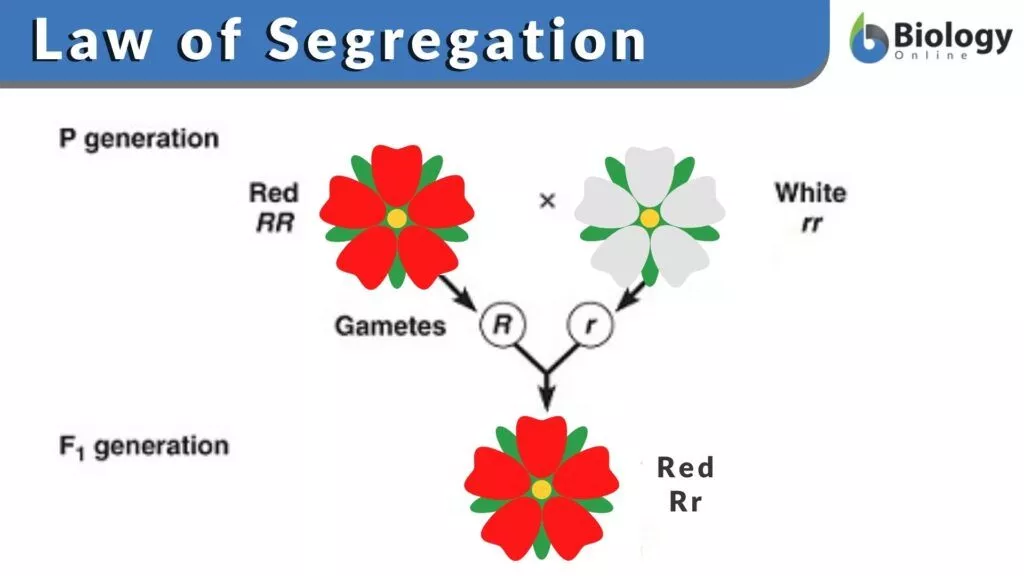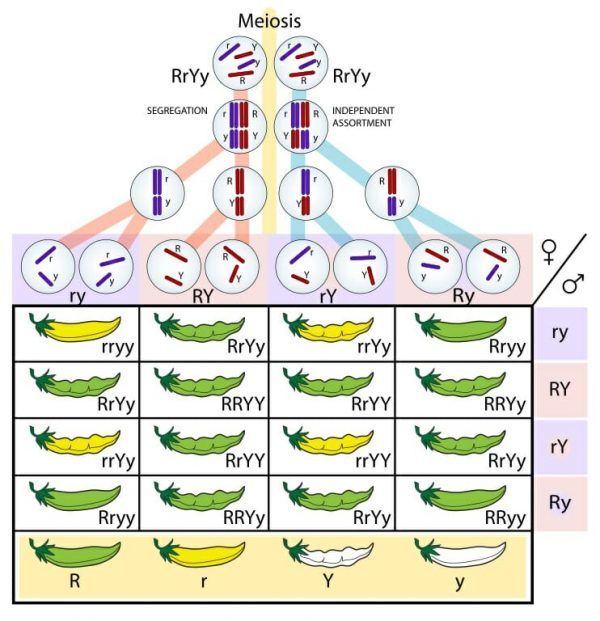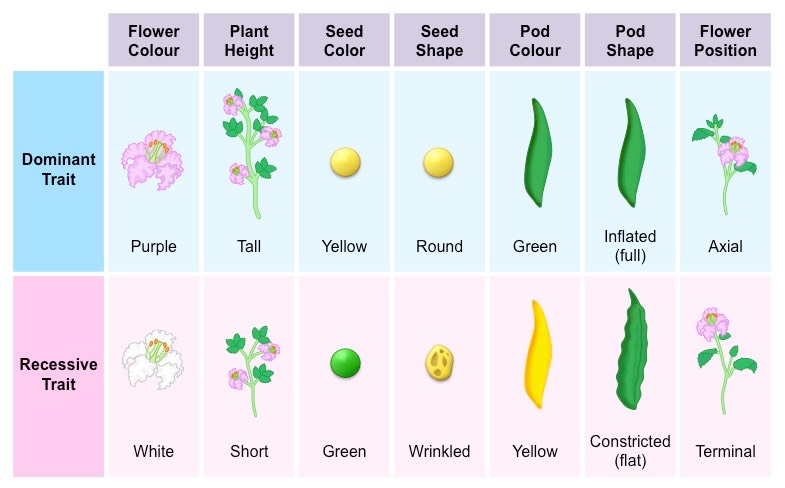Mendel’s Laws Study Guide
Introduction
Mendel performed garden pea hybridization experiments between 1856 and 1863. During that time, he selected several specific pea traits. He performed cross-pollination/artificial pollination in true breeding pea plant lines that had stable trait inheritance and were self-pollinating continuously.
Mendel used a pea plant as a test subject and looked for seven distinct features in the plants. He then carried out tests to figure out how inheritance works. Through his two experiments, the monohybrid and dihybrid cross, Mendel formulated three laws of inheritance: the law of segregation, the law of independent assortment, and the law of dominance. Let’s go over them below.
Law of Segregation

The Law of Segregation asserts that each character has two alleles in each organism, which segregate (separate) during meiosis such that each gamete only has one of the alleles.
-
By receiving homologous chromosomes from the parent organisms, a child inherits a pair of alleles for each trait: one allele for each trait from each parent.
-
Because the law of segregation is predicated on equal segregation of alleles, a Punnett square may be used to estimate the genotypes that follow from across.
-
Because the two members of a gene pair segregate from each other, each gamete has an equal chance of receiving either component of the gene pair.
-
The law of segregation is crucial because it established the notion of genetic elements that exist as distinct entities even when present in the same space as other comparable things.
-
The production of features encoded by recessive alleles in the F1 generation was used to invalidate a blending theory.
Law of Independent Assortment

The Law of Independent Assortment states that segregating gene pairs that are unrelated or distantly related acts independently.
-
According to the law of independent assortment, alleles for different qualities are transmitted independently of one another.
-
The biological selection of an allele for one characteristic has no bearing on allele selection for other traits.
-
In his dihybrid cross tests, Mendel found evidence for this rule. His monohybrid crosses achieved an optimal 3:1 ratio of dominant to recessive traits. However, he discovered 9:3:3:1 ratios in dihybrid crossings.
-
This demonstrates that each of the two alleles is inherited separately from the other, each having a 3:1 phenotypic ratio.
-
Mendel discovered this law while working on dihybrid crosses between various pea plants. He noticed that the mix of characteristics in the offspring did not always match that created by the combination of parental features.
-
The rule explains the occurrence of many gene combinations from the same set of genes that were previously unaccounted for.
Law of Dominance

The Law of Dominance states that in a heterozygote, a dominant trait will block the expression of another trait for the same characteristic.
-
An individual’s genotype is made up of the numerous alleles they have.
-
A person’s physical appearance, or phenotype, is determined by both their alleles and their environment.
-
The existence of an allele does not guarantee that the characteristic will manifest in the person who carries it.
-
When the two alleles of an inherited pair vary (the heterozygous situation), the dominant allele defines the organism’s appearance, while the recessive allele does not influence the organism’s appearance.
-
As a result, the dominant allele will mask the recessive allele’s phenotypic consequences.
-
Dominant alleles are represented by uppercase letters, whereas recessive alleles are represented by lowercase letters.
-
During fertilization, the two alleles responsible for a character are brought together, with one allele coming from the maternal gamete and the other from the paternal gamete.
-
The idea of dominance is solely limited to genotypic characteristics and does not represent any individual’s phenotype.
✅ Conclusion
-
After seven years of experimentation on pea plants, Gregor Mendel postulated the laws of inheritance.
-
Mendel’s laws of inheritance include the laws of dominance, segregation, and independent assortment.
-
According to the law of segregation, each individual has two alleles, and only one is handed down to its offspring.
-
According to the law of independent assortment, the inheritance of one pair of genes is unrelated to the inheritance of another pair.
-
According to the law of dominance, a dominant trait will block the expression of another trait for the same characteristic
FAQs
1. What are Mendel 3 laws?
Mendel postulated the law of trait inheritance from the first to the second generation. The three laws that make up the law of inheritance are the law of segregation, the law of independent assortment, and the law of dominance.
2. What is the law of segregation?
The law of segregation stipulates that each person has two alleles and that only one allele is handed down to the children. The sole law does not have any exceptions, making it universally valid in all situations.
3. What is the law of independent assortment?
The law of independent assortment states that segregating gene pairs that are unrelated or distantly related acts independently.
4. What is the law of dominance?
The law of dominance states that in a heterozygote, a dominant trait will block the expression of another trait for the same characteristic.
We hope you enjoyed studying this lesson and learned something cool about Mendel’s Laws! Join our Discord community to get any questions you may have answered and to engage with other students just like you! Don’t forget to download our App to experience our fun, VR classrooms – we promise, it makes studying much more fun! 😎
]]>